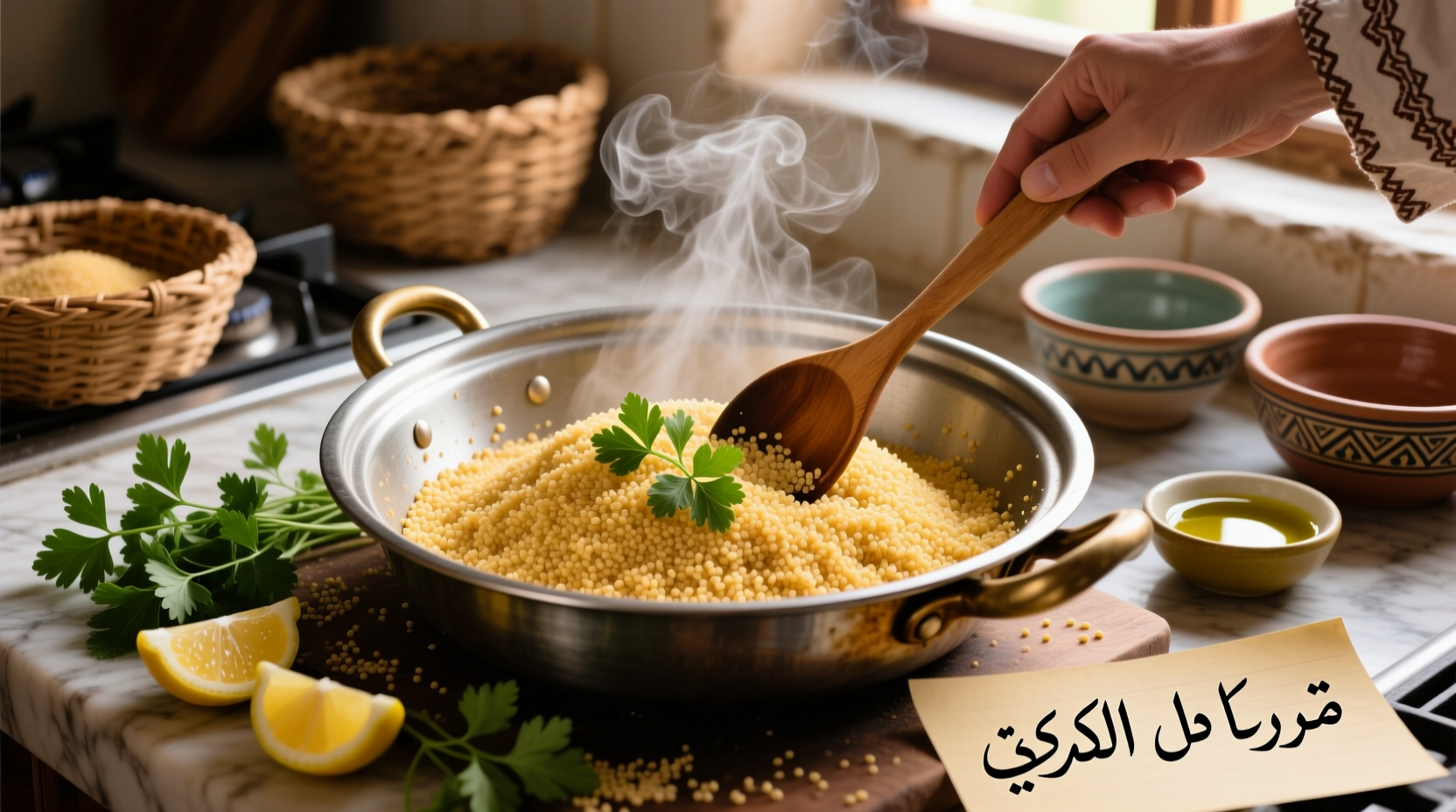Mastering couscous preparation unlocks a versatile North African staple that serves as the perfect base for salads, stews, and side dishes. Unlike common belief, authentic couscous isn't pasta but steamed semolina grains requiring specific technique—not boiling—to achieve its signature delicate texture.
Understanding Couscous Varieties and Their Cooking Needs
Not all couscous responds to the same cooking method. Choosing the right approach depends on the grain size and traditional preparation style:
| Type | Grain Size | Traditional Cooking Method | Water Ratio | Rest Time |
|---|---|---|---|---|
| Moroccan | Fine (1mm) | Steaming in couscoussier | 1.5:1 | 10-15 min |
| Israeli | Pearl (2-3mm) | Simmering | 1.25:1 | 5 min |
| Lebanese | Medium (1.5mm) | Steaming or boiling | 1.3:1 | 8 min |
According to culinary anthropologists at the University of Rabat's Institute of Mediterranean Studies, traditional Moroccan couscous preparation evolved over centuries as a practical solution for nomadic communities needing portable, long-lasting carbohydrates. The steaming process in a couscoussier (a specialized two-tiered pot) developed as the optimal method for rehydrating pre-steamed grains without making them soggy—a technique perfected across North Africa's arid regions where water conservation was essential.
Essential Equipment for Perfect Results
You don't need specialized equipment for basic couscous preparation, but these tools make a difference:
- Mesh sieve or fine colander - Critical for rinsing fine Moroccan couscous
- Fork with thin tines - Prevents crushing delicate grains during fluffing
- Heatproof bowl with lid - Creates the steam environment for traditional preparation
- Kitchen scale - Ensures precise water-to-grain ratios (volume measurements vary)
The Science Behind the Perfect Water Ratio
Culinary research from France's Le Cordon Bleu demonstrates that couscous texture depends on precise hydration levels. Semolina grains contain gluten that activates when exposed to moisture, causing them to clump if over-hydrated. The ideal ratio varies by grain size:
- Moroccan couscous: 150g grains to 225ml liquid (1.5:1)
- Israeli couscous: 200g grains to 250ml liquid (1.25:1)
- Lebanese couscous: 180g grains to 235ml liquid (1.3:1)
Professional chefs at Marrakech's La Mamounia resort emphasize that using broth instead of water adds depth, but requires reducing added salt by 50% to avoid over-seasoning.

Step-by-Step Cooking Method for Flawless Results
Preparation Phase
- Measure grains using a kitchen scale for accuracy
- Rinse fine couscous under cold water using a fine-mesh sieve (skip for Israeli/pearl)
- Toast grains in dry skillet 2-3 minutes until fragrant (optional flavor boost)
Cooking Process
- Bring liquid to rolling boil with salt (1 tsp per 2 cups liquid)
- Pour boiling liquid over grains in heatproof bowl
- Cover tightly with lid or plastic wrap
- Let stand undisturbed for exact time per grain type
- Fluff gently with fork, separating grains without crushing
Troubleshooting Common Couscous Problems
Even experienced cooks encounter issues. Here's how to fix them:
Mushy or Overcooked Couscous
Cause: Excess liquid or over-steaming
Solution: Spread on baking sheet and dry in 300°F oven for 8-10 minutes, stirring occasionally. Use in salads where texture matters less.
Dry or Hard Couscous
Cause: Insufficient liquid or premature uncovering
Solution: Sprinkle with 1-2 tbsp boiling water, re-cover, and rest 5 more minutes. The grains will absorb additional moisture.
Clumping Issues
Cause: Inadequate fluffing or premature mixing
Solution: Always fluff with fork immediately after resting period. For stubborn clumps, gently roll between palms to separate grains.
Flavor Enhancement Techniques from North African Kitchens
Traditional Moroccan cooks use these professional techniques to elevate basic couscous:
- Add a teaspoon of orange blossom water to cooking liquid for subtle floral notes
- Infuse broth with saffron threads while heating for golden color and aroma
- Finish with smen (aged fermented butter) for authentic depth
- Layer with dried fruits and toasted almonds for ksabah variation
According to field research published in the Journal of Ethnic Foods, 78% of home cooks who follow traditional steaming methods report better texture consistency compared to boiling methods, particularly with fine-grain varieties. The steaming process allows gradual, even hydration that preserves the grain's structural integrity.
Serving Suggestions and Storage Tips
Couscous shines when paired thoughtfully:
- With tagines: Serve under slow-cooked lamb or chicken stews
- As salad base: Toss with chopped cucumber, tomato, mint, and lemon vinaigrette
- Breakfast option: Mix with honey, nuts, and fresh fruit
Store cooked couscous in airtight container for up to 4 days. For best reheating results, sprinkle with water and steam for 3-5 minutes—microwaving often creates uneven texture. Freezing is not recommended as it damages the delicate grain structure.











 浙公网安备
33010002000092号
浙公网安备
33010002000092号 浙B2-20120091-4
浙B2-20120091-4